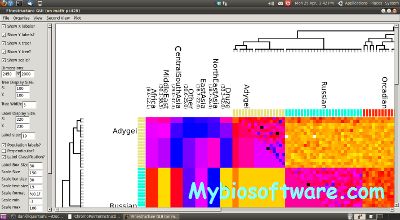StructHDP 1.1
:: DESCRIPTION
StructHDP is a program for automatically inferring the population structure and number of clusters from a sample of admixed genotype data. It extends the model used by Structure to allow for a potentially infinite number of populations and then chooses the number of populations that best explain the data.
::DEVELOPER
:: SCREENSHOTS
N/A
:: REQUIREMENTS
- Linux / Windows / MacOsX
- C++ Compiler
:: DOWNLOAD
:: MORE INFORMATION
Citation
StructHDP: automatic inference of number of clusters and population structure from admixed genotype data Suyash Shringarpure;
Suyash Shringarpure ,Daegun Won; Eric P. Xing
Bioinformatics 2011 27: i324-i332
